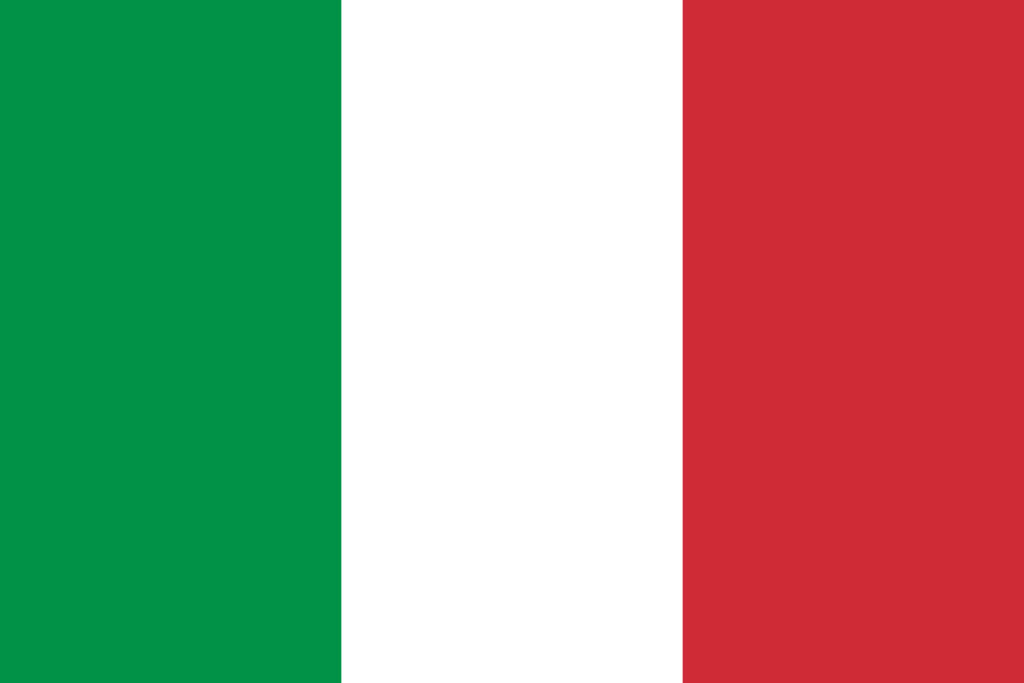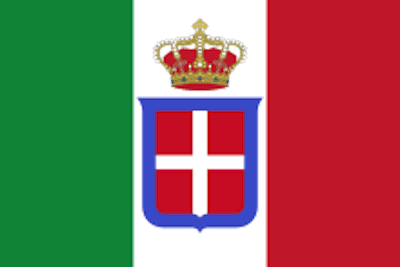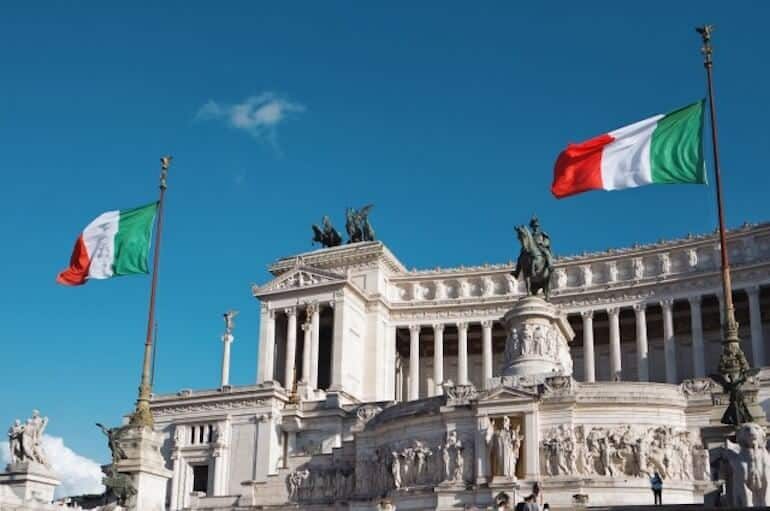Do you know what the iconic three colors of the Italian Flag mean?
When thinking of the most well-known flags in the world, it is likely that the Italian Flag or “Il Tricolore” will come to mind. Its red, white and green colors provide a sense of vibrancy and life and is easily one of the most recognizable flags in the world. As an American growing up in the States, the Italian flag represented many things for me including: incredible food, impeccable design, fashion and passion.

Origins of the Italian Flag
Despite Italy being a place full of thousands of years of history, the country itself was not officially unified as one nation until 1861. This colorful symbol of unification didn’t always feature the same recognizable trio we see on today’s flag. The inspiration behind the tricolor design of the flag actually came from the country that controlled a large majority of Italy during the 1700s: France. Prior to the unification of Italy in 1861, there was a different flag to represent each of the autonomous flags within Italy.
The iconic green, red and white color combination originates from an unofficial government located in Milan. The militia members that were part of this unofficial group of individuals wore these colors on their uniforms. The vertical stripes depicted upon the flag were in fact originally facing in a clockwise direction. The Tricolore featured on the flag was used as a symbol of unified Italian nationalism for many years and when Napoleon’s reign ended in 1814, it finally became a symbol of Italy as one. This sense of unity continued with the adoption of flags featuring the Tricolore by various Italian regions.
The Italian flag we now know was used by the Italian military during their battle against Austria in 1848, which proved to be a prominent turning point in the symbolization of the Italian confederation. A shield, cross, and crown were later added to the flag in 1861 when Italy was officially recognized under the Royal House of Savoy of Piedmont and Sardinia. The shield and cross that represented the Royal House, as well as the crown representing the monarchy, slowly disappeared from the flag giving it a more simplistic appearance.
The colors of the Italian flag are similar to those of the Mexican flag, which differs, however, in terms of proportions and the shade of green, as well as the emblem in the center.
Symbolism and Meaning of the Italian Flag
The Italian flag, consists of three equally sized vertical bands of green, white, and red. Each color holds profound symbolism and meaning. The green represents the country’s plains and the hills, white denotes the snow-capped Alps and the overall peace and unity within the nation, while red stands for the blood spilt in the wars of Italian independence.
The emblem of unity, the Italian flag also signifies the country’s rich cultural heritage and the valor of its people. It reflects Italy’s democratic values and the enduring spirit of the Republic. As a national symbol, it evokes pride and patriotism among Italians and is displayed prominently on public buildings, during national holidays, and at international sporting events.

When did Italy get an official Italian flag?
The tricolor design became the official flag of Italy when the Republic was established with a referendum in 1946. Many interpret the Italian flag as having a strong sense of unity and strength found within the contentment of one’s nation. There is not one, but a couple of theories regarding the significance and true meaning behind the flags’ colors. Some believe that the three colors represent something of religious importance; viewing the green as a symbol of hope, white for faith, and red for charity. Those who take a more romantic approach to the symbolism behind the flag interpret its colors as representing the beautiful and diverse scenery within the country, with white for the snow-capped Alps, green for the sprawling hills and plains, and red for the blood that was spilled during the war for Italian independence.
There have been many influential moments in the development of Italy as a nation and the evolution of the flag over the years has truly encapsulated that. While we may never have a definite answer for the real meaning behind its colors, one thing is clear: the sense of unity and pride that it brings with it to the Italian people is truly something unique.
INSPIRATION
The Essential Guide To Rome




